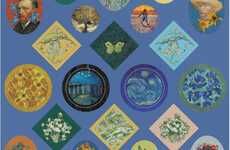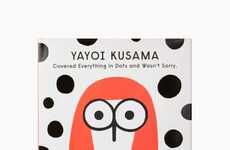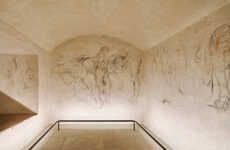
These Images Help Differentiate Between Renaissance Painters
Alyson Wyers — September 24, 2013 — Art & Design
References: themetapicture & designtaxi
If you struggle to differentiate Renaissance painters and your pretentious friends are giving you a hard time for it, look no further. The Meta Picture compiled a variety of different classical paintings to help non-art history majors to identify the signature styles of different Renaissance painters from the well-known Michaelangelo and Rembrandt to artists like Titian and Boucher.
The paintings include the artist's full name as well as a hilarious identifying caption. While the statements are accurate, they are not foolproof. An example of this is Degas's description, "If you see a ballerina, it's Degas." Other helpful hints point to the painter's artistic techniques, tone and the way their subject matter appears, often using colorful language.
The paintings include the artist's full name as well as a hilarious identifying caption. While the statements are accurate, they are not foolproof. An example of this is Degas's description, "If you see a ballerina, it's Degas." Other helpful hints point to the painter's artistic techniques, tone and the way their subject matter appears, often using colorful language.
Trend Themes
1. Renaissance Painter Identification - Opportunity to develop digital tools or apps that use artificial intelligence to accurately identify Renaissance painters based on their signature styles.
2. Art History Education - Potential to create innovative and engaging educational resources that help non-art history majors learn about Renaissance painters and their unique styles.
3. Humorous Art Commentary - Growing trend of using humor as a way to make art more accessible and enjoyable, leading to opportunities for artists and content creators to incorporate witty and funny commentary into art-related content.
Industry Implications
1. Artificial Intelligence - AI technology can be applied in developing algorithms that analyze and identify Renaissance painters' signature styles.
2. Education Technology - EdTech companies can create interactive platforms and learning tools that make studying art history, specifically Renaissance painters, more engaging and entertaining for non-art history majors.
3. Content Creation and Entertainment - Content creators, comedians, and artists can tap into the trend of using humor to bring art to a wider audience, producing entertaining and funny art commentary in various formats like social media content, videos, and podcasts.
3.2
Score
Popularity
Activity
Freshness























